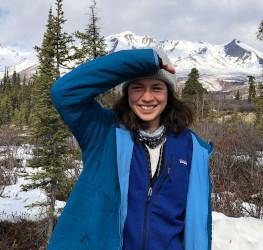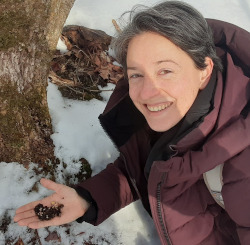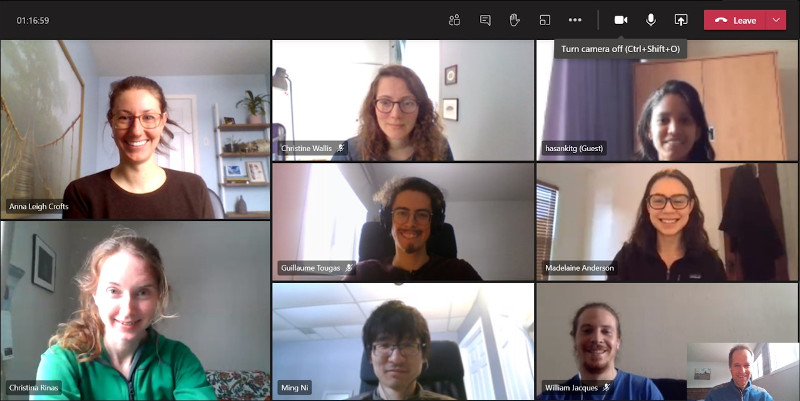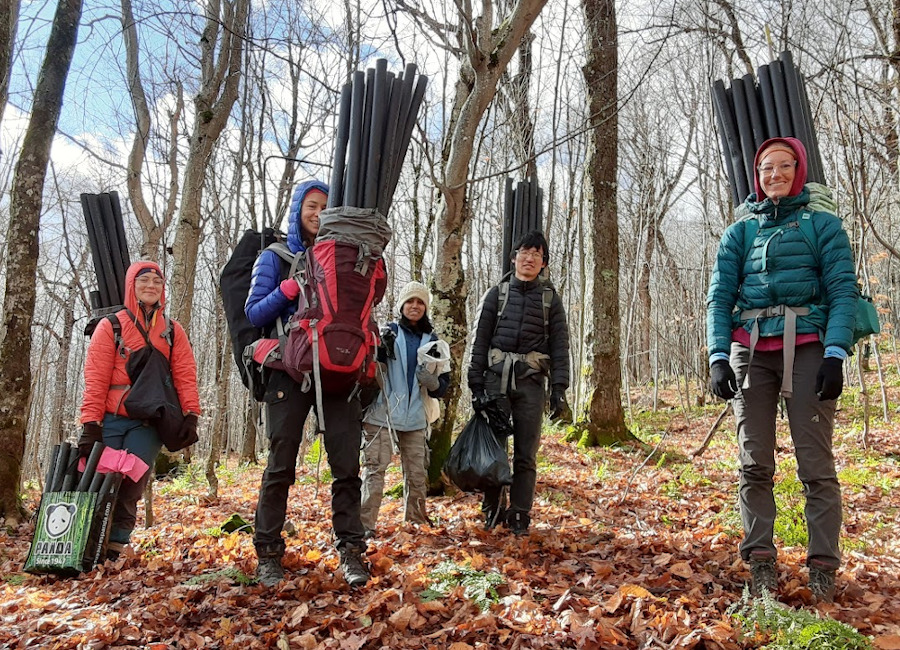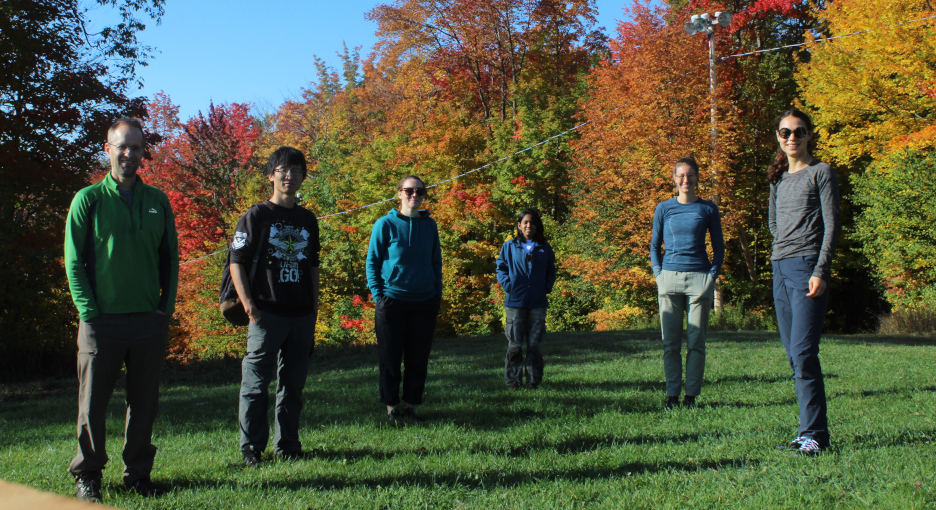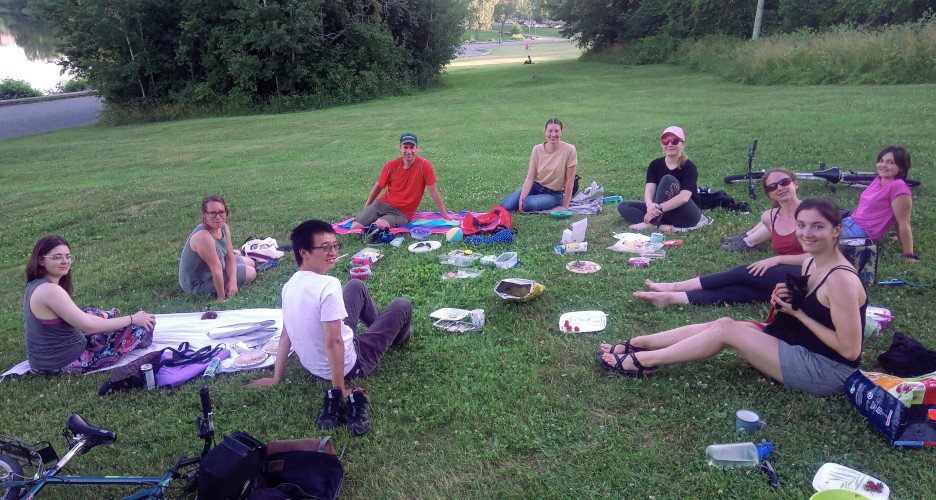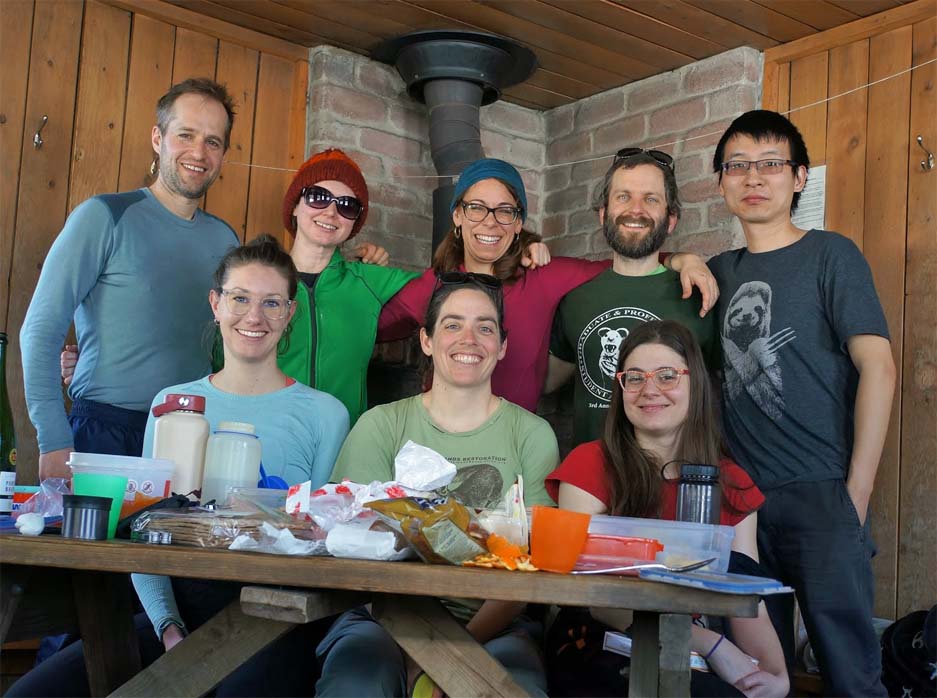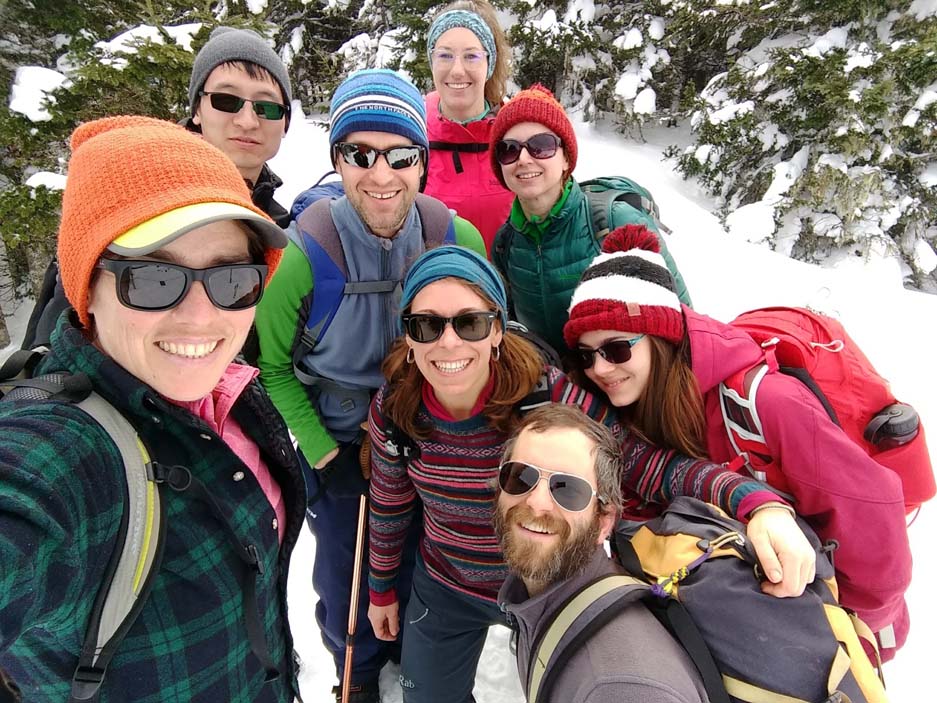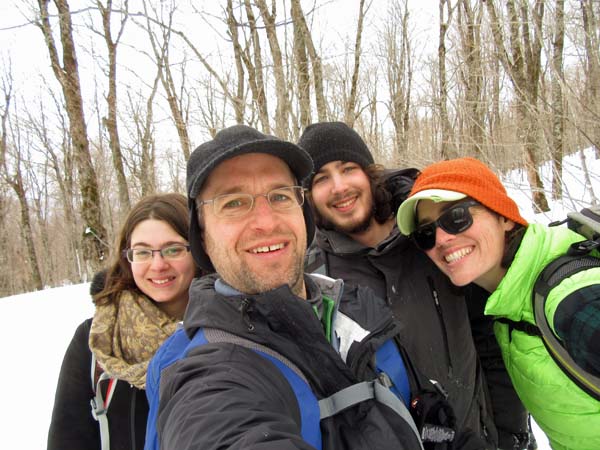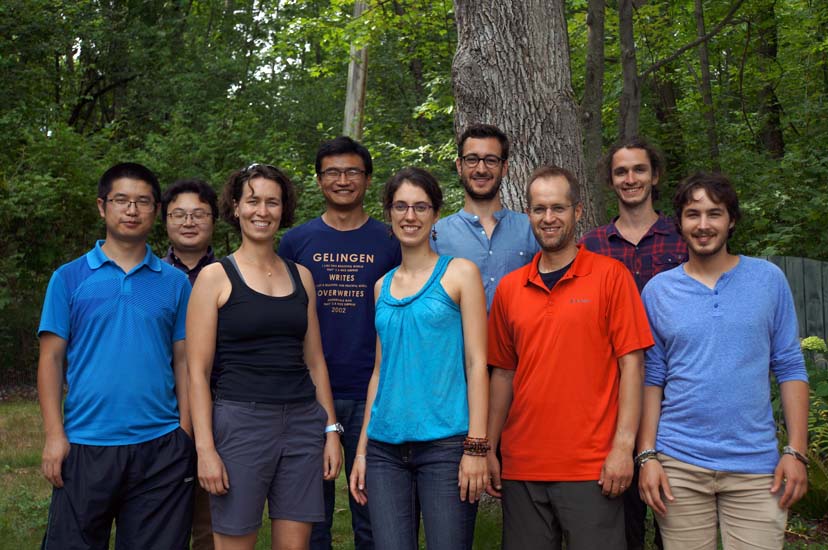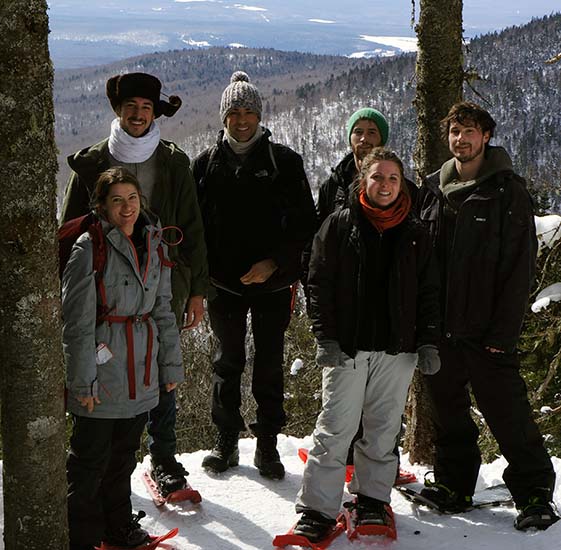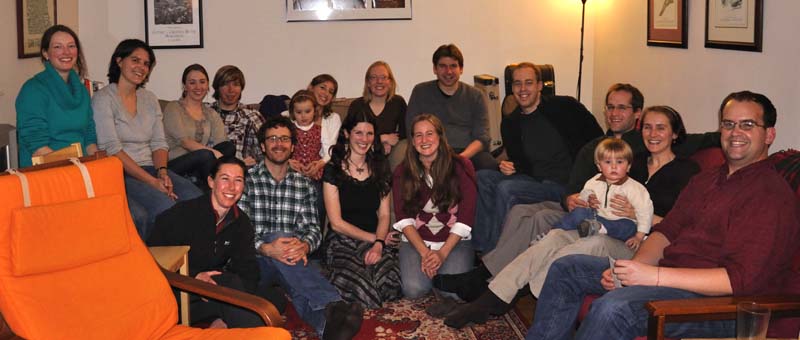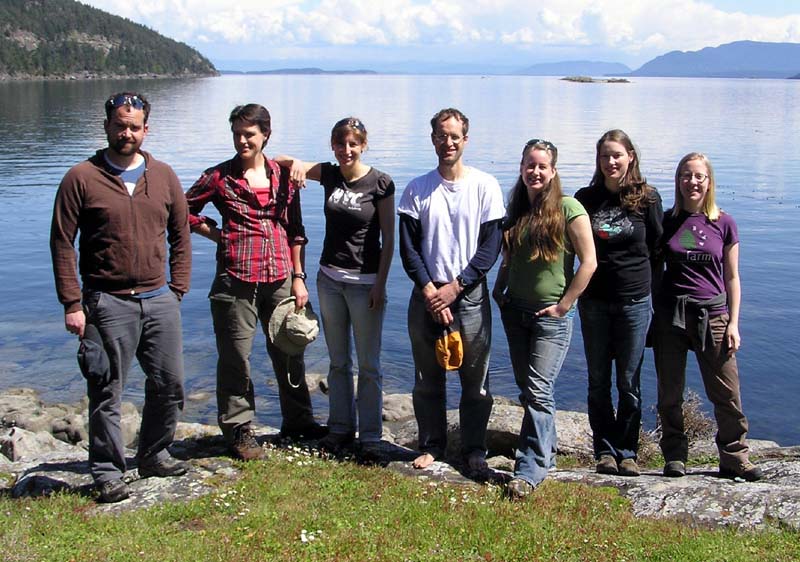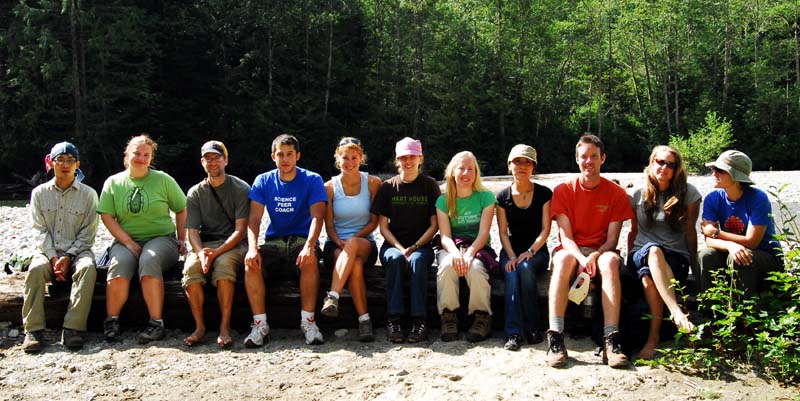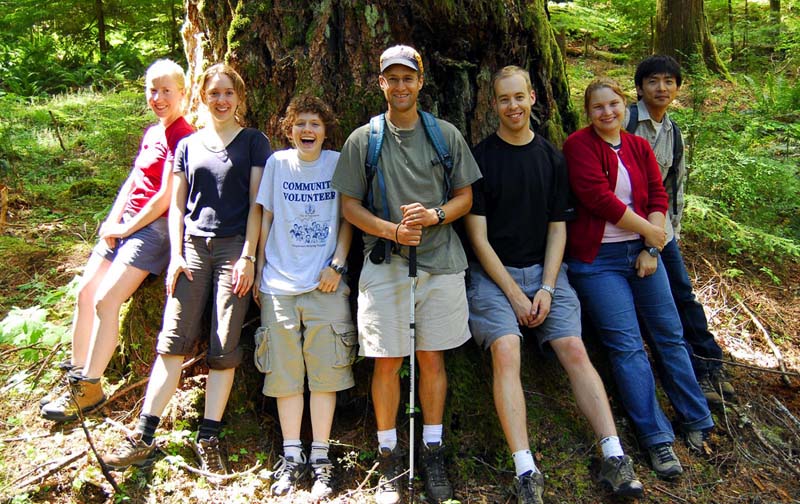





Personnel
|
||
Madelaine Anderson (Ph.D. Student)
Broadly, I am interested in how plant communities and landscapes are impacted by global change. Growing up, I spent all my summers in northern Canada, which inspired curiosity about and passion for northern ecosystems. The Arctic tundra biome is changing quickly with major implications on biodiversity, climate, and humans. My doctoral research is situated within the Arctic portion of the Canadian Airborne Biodiversity Observatory (CABO) project. Working with CABO and Team Shrub, led by Isla Myers-Smith and based out of the University of Edinburgh, I will explore biodiversity change in the tundra biome using remote sensing approaches and field-based surveys. I will ask questions about linking tundra plant spectral signatures to tundra plant phenology, plant traits and biodiversity.
N
Je suis intéressée par la biodiversité des plantes et comment les écosystèmes répondent aux changements climatiques, pour mieux comprendre comment ces changements peuvent affecter le calendrier phénologique. Pour ma maîtrise, je vais effectuer un travail de terrain dans le Parc national du Mont Mégantic, Québec. Je vais utiliser la photographie en temps réel et autres méthodes pour répondre aux questions suivantes : (i) Comment les changements climatiques peuvent impacter la phénologie des arbres à travers le temps et l’espace? (ii) Comment les relations phénologie-climat varient-elles d'une espèce à l'autre et d'un environnement à l'autre? I have broad interests in plant biodiversity and how ecosystems respond to climate change, with a particular focus on the timing of biological events (phenology). For my Master's degree, I will conduct field work in Parc national du Mont Mégantic, Quebec. Using repeat photography and field validation, I will address the following questions: (i) What is the impact of climate change on tree leaf phenology over space and time? (ii) How do phenology-climate relationships vary across species and environments? Simon Petley (M.Sc. student)
I am a master’s student at McGill University in Montreal, co-supervised by Mark Vellend and Anna Hargreaves. My research interests land at the intersection of plant biogeography and soil science, bolstered by an appreciation for plant-microbe associations, conservation biology, and a bit of quaternary geology, too. My approach to research is bottom-up and holistic – I am a naturalist first. During my BSc at the University of Victoria, I conducted an honours project exploring the role of condensed tannins in the establishment of ectomycorrhizal symbiosis. For my master’s degree, I am investigating the influence of edaphic variability on the range limit of the at-risk perennial plant sundial lupine (Lupinus perennis). Through a combination of field, greenhouse and lab work, my project explores how soil properties influence the current and future range of sundial lupine. |
Audrey Lafrenaye (Ph.D. student)
Depuis plusieurs années, je m’intéresse aux interactions entre les insectes et les plantes. Au cours de ma maîtrise et de mon parcours professionnel, j’ai concentré mes recherches sur le contrôle des ravageurs en agriculture. Pour mon projet de doctorat, qui a débuté en février 2024, je vais me pencher sur les interactions entre les plantes et leurs pollinisateurs le long du gradient altidudinal au Mont-Mégantic, Québec. Mon objectif principal est de mieux comprendre l'impact des changements climatiques sur le succès reproducteur des plantes ainsi que sur leurs pollinisateurs en milieu forestier. À travers mes travaux, j'espère apporter des contributions significatives à la prédiction des effets du réchauffement planétaire, afin d'orienter efficacement les efforts de conservation des écosystèmes forestiers. For several years, I have been interested in interactions between insects and plants. During my master's degree and professional journey, I have focused my research on pest control in agriculture. For my doctoral project, which began in February 2024, I will investigate the interactions between plants and their pollinators along the altitudinal gradient at Mont-Mégantic, Quebec. My primary objective is to better understand the impact of climate change on the reproductive success of plants and their pollinators in forest environments. Through my work, I hope to make significant contributions to predicting the effects of global warming, in order to effectively guide efforts in conserving forest ecosystems. Léa Gauthier-Soumis (M.Sc. student)
Avec les changements climatiques, les gels tardifs, c'est-à-dire des gels se produisant après une période de chaleur, pourraient devenir plus fréquents. Les températures plus chaudes arrivent généralement plus tôt au printemps, mais le risque de gel journalier semble rester similaire. Mon projet de maîtrise porte plus particulièrement sur l’impact des gels tardifs printaniers sur la croissance et la reproduction des plantes de sous-bois dans le Parc national du Mont-Mégantic. Je vais également tester l’hypothèse selon laquelle la fréquence de ces événements climatiques augmente. With climate change, late frosts – after plants have already emerged – may become more frequent. Warmer temperatures tend to arrive earlier in spring with climate change, but the risk of daily frosts might remain similar. My Master's project focuses specifically on the impact of late spring frosts on the growth and reproduction of early spring understory plants in Mont-Mégantic National Park. I will also test the hypothesis that the frequency of late frosts is increasing with climate warming. |
|
In the lab 2022: Ming Ni, Christine Wallis, Hasanki Gamhewa, Guillaume Tougas, Madelaine Anderson, Christina Rinas, Anna Crofts
Past Graduate Students and Post-docsTerri Lacourse Patrick Lilley Emily Drummond Hiroshi Tomimatsu Will Cornwell Tom Deane Tanis Gieselman Nathan Kraft Isla Myers-Smith Carissa Brown Heather Kharouba Jenny McCune Robin Beauséjour Josée Savage Geneviève Lajoie Jean-Philippe Lessard Anne Bjorkman Jamie Leathem Morgane Urli Martine Fugère Benjamin Marquis (co-supervised by Matthew Peros, Bishop's) Julien Beguin Cesc Murria Sébastien Rivest Liz Kleynhans Antoine Becker-Scarpitta Julie Messier Véronique Boucher-Lalonde Diane Auberson-Lavoie Amanda Young David Watts Sabine St-Jean Alexis Carteron Victor Danneyrolles Erin Crockett Françoise Cardou Inês Martins Christina Rinas Ming Ni Hasanki Gamhewa Christine Wallis Anna Crofts Sabine St-Jean Guillaume Tougas Tadhg Carroll Charlotte Brown
Old lab pictures...
Covid lab meeting: Anna Crofts, Christine Wallis, Hasanki Gamhewa, Madelaine Anderson, William Jacques, Ming Ni, Christina Rinas, Guillaume Tougas
Taking down the shade experiment, Autumn 2021: Christine Wallis, Madelaine Anderson, Hasanki Gamhewa, Ming Ni, Anna Crofts
Socially distanced hike on Mont Hatley, October 2021 (from left to right: Mark Vellend, Ming Ni, Christine Wallis, Hasanki Gamhewa, Anna Crofts, Madelaine Anderson)
Socially distanced lab picnic: Diane Auberson-Lavoie, Françoise Cardou, Ming Ni, Mark Vellend, Anna Crofts, Mélanie Béhé, Christina Rinas, Sabine St-Jean, Isabelle Lefebvre (Parc Jaques Cartier, juillet 2020)
Back row: Mark Vellend, Christina Rinas, Françoise Cardou, David Watts, Ming Ni; From row: Anna Crofts, Amanda Young, Diane Auberson-Lavoie (Mont Mégantic, mars 2019)
Same people, same day, selfie version.
Diane Auberson-Lavoie, Mark Vellend, Sébastien Rivest, Amanda Young (Mont Mégantic, mars 2017)
Labo, mars 2014: Morgane, Antoine, Cesc, François, Geneviève, Benjamin
Labo, juillet 2012: Anne-Sophie, Geneviève, Leonardo, Josée, Carissa, Robin, Isla, Valérie, Mark
Christmas/Farewell Party 2010: Back row: Jamie, Jenny, Emily, Dan, Annabelle, Heather, Anne, Hannes, Patrick, Mark, Félix, Véronique, Nathan; Front row: Liz, Joe, Janet, Tanis
May 2010, Taylor Point, Saturna Island: Nathan Kraft, Jenny McCune, Heather Kharouba, Mark Vellend, Tanis Gieselman, Jamie Leathem, Anne Bjorkman
May 2008, Golden Ears Provincial Park: Hiroshi Tomimatsu, Jenn Muir, Mark Vellend, Maurice Agha, Heather Kharouba, Emily Drummond, Anne Bjorkman, Nozomi Tomimatsu, Will Cornwell, Tanis Gieselman, Jenny McCune
July 2007, Vancouver Island: Anne Bjorkman, Emily Drummond, Laura Super, Mark Vellend, Patrick Lilley, Jen Muir, Hiroshi Tomimatsu |
||



